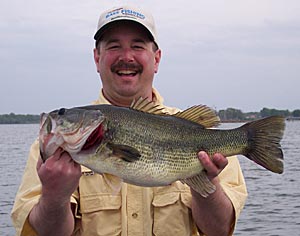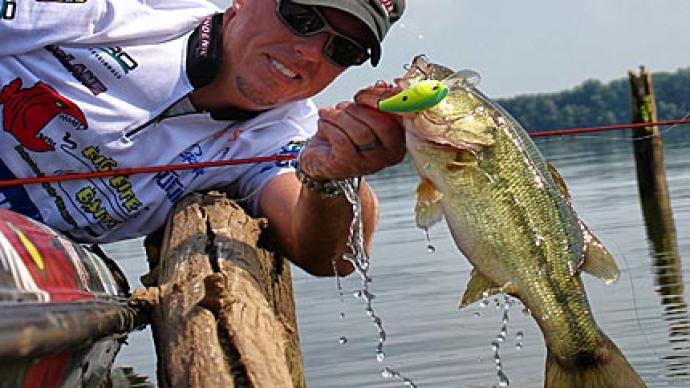
Many anglers believe that bass become lethargic and won’t bite for two weeks after a rigorous spawn. It’s true that bass become stressed by the spawn and require time to recover. However, catching them during the postspawn season isn’t as difficult as you might think.
Throughout late spring and early summer, there are bass in all stages of the spawn. By May and June, early spawners have already settled into summer movements while other bass in the lake are just going to the nests. Consequently, you should not assume fishing is bad throughout a lake because “they’re in the postspawn.”
Feeding activity actually picks up after bass leave the nests. During the days of spawning activity, food and cover are not priorities, but that changes quickly. Big females will scatter over flats or suspend along drop-offs for a day or two, but they recover quickly. Once that’s behind them, the fish are ready to eat. That’s when bass gang up on isolated structure and are more willing to take a lure.
The best areas are along ledges or long points that border spawning areas and deep water. I look for humps and ledges in 8 to 10 feet of water close to depths of 20 feet or more.
The presence of bait is another factor. If you can find schooling shad near the types of structure I just mentioned, bass should be nearby.
The fish will be extremely aggressive, but they’ll also school tightly. That’s why I opt for a deep crankbait that allows me to probe the top of the shelf, the lip and the drop-off itself. A crankbait also allows me to cover water quickly, increasing my chances of finding these isolated areas and stumbling onto the other lode.
After a while, fishing pressure will affect these bass. Once you locate a good area and pound it pretty hard, the bass may lose their aggressiveness. Slower presentations using a Carolina rig, plastic worm or jig-and-pig may be more effective.
Stained water is another element that can work to your advantage. Each time you catch a fish, you may actually “pull” the school away from the structure and closer to the boat. Perhaps you’ve seen it happen. You’re fighting a fish and others follow the hooked fish to the boat. In clear water, those fish see the boat and become spooked. If confronted with this situation, be patient; take time between casts. After you catch a couple of fish, give the school time to settle back on the structure.
A few years ago, I found a school of postspawn bass hanging around creek ledge stumps in clear water. On back-to-back casts, my partner and I each caught a pair of 2 ½ pound bass. After the second fish, I told him not to throw in there and moved us away from the structure. He didn’t understand why I would leave fish like that until I explained that we could catch fish there all day if we were patient.
We returned to the spot several times throughout the day and we both ended up culling a good limit. If we had tried to catch them all at once, we would have spooked the school and only caught a few.
So, when bass on your lake move into the postspawn season, keep an open mind and be patient. While other anglers are convincing themselves that they can’t catch bass during that period, you’re going to be having a good time on the water.
You can find more articles, quick tips and much more at HankParker.com.




